Curious Cat:
Hello children.
Martin:
Hello, Curious Cat
Harry:
Hello, Curious Cat.
Curious Cat:
What are you doing?
Harry:
We're drawing pictures with crayons.
Martin:
We've drawn pictures of you.
Curious Cat:
Wow, that's great. Crayons can be all sorts of different colours, not just orange and purple. Do you know what they're made of?
Martin:
Are they made of wax?
Curious Cat:
Yes, that's right. And wax is made from oil, a black shiny liquid that comes from underground.
Narrator:
Oil is found in rocks, which have lots of little holes in them like a sponge. These rocks filled with oil, are deep under the sea, or are in the ground under our feet. Big machines drill down to where the oil is and take it out. Oil is really useful for all sorts of things. It goes to a factory where it's made into all sorts of stuff, including petrol for cars, the chemicals which make plastics, and the main ingredient for crayons which is called paraffin wax. Do you want to find out what happens to the wax next to make it into different coloured crayons?
Martin:
Yes, please.
Harry:
Yes, please.
Curious Cat:
Okay then, off you go.
Narrator:
Liam, runs the only children's crayon factory in the UK. They can make all your favourite colours. He'll tell you where it all starts.
Liam:
Wax is the main ingredient used to make crayons. It arrives in small flakes, so it's easier to heat up and melt.
Harry:
It feels a big hard and squishy.
Narrator:
That's right, but the wax is too hard to write on paper, so we add a chemical which makes the wax softer, so it can draw on paper.
Harry:
It's very soft.
Liam:
Next, we put the two ingredients in this big pot which heats it up and melts into a liquid, like ice cream in the sun. It heats it up to 120 degrees, which is hotter than a boiling kettle.
Narrator:
Wow, that sounds really hot. When the wax gets that hot, it melts into a liquid that can be poured into a bucket, ready for what happens next.
Harry:
Why's the wax really watery?
Narrator:
It does look like water, doesn't it? The wax becomes clear when it melts, so it looks just like water.
Liam:
Now the wax is ready, we need to add some colour. But it's really difficult to add colour to the wax, so we need to force it together. Would you like to see?
Martin:
Yes, please.
Harry:
Yes, please.
Liam:
So, here are the colours, they're incredible strong. If I was to open this and you touch the powder, you wouldn't be able to wash it off for a long time. And these are the four main colours we use. Red, blue, green and yellow.
Harry:
Where did those colours come from?
Liam:
For thousands of years, colours came from plants and animals. Red used to come from crushed spiders. Yellow comes from plants and animal wee, and blue comes from the indigo plant. But today, we use chemicals to make our colours.
Narrator:
That's right. The chemicals can make all sorts of colours, but they don't mix well with wax. So, the next thing to do is to make the colour ready to add to the wax. A little bit of hot wax and colour and mix. And put through a machine, which squeezes them together. And out comes blue colour, ready to add to the wax to make crayons. The colour is still warm. Careful when you touch it.
Harry:
Smell it, Martin.
Martin:
Ugh, ugh.
Harry:
Ugh. Smells like paint.
Narrator:
The colour cools down and becomes hard, ready to make crayons. This is where the colour is added to the hot wax. Andrew, is making green crayons.
Harry:
What is the white stuff for?
Liam:
We add the white powder to the crayons to keep them strong, otherwise when you write with them on paper, they would just break.
Narrator:
The white powder is another chemical added to the crayon mixture. The colour has now melted into the wax to make a lot of green crayon mixture. Next, the crayons are made.
Liam:
Next, we pour the wax on, and the wax sinks into the little holes. Can you see the holes?
Harry:
Yes.
Martin:
Yes.
Liam:
Well each one of them little holes makes a crayon.
Narrator:
The hot wax pours down into each hole to make a crayon.
Liam:
Now, this is the clever bit. We circulate cold water around each crayon to make sure it cools at just the right temperature. If it cools too quickly, we end up with a very bumpy crayon and they break easily.
Narrator:
The cold water inside the machine, cools each crayon in just the right way.
Liam:
After a couple of minutes, the liquid wax is cooled into a solid crayon and we scrap the rest of the wax off. That wax goes back in the pot to be used again and again.
Martin:
But where are the crayons?
Liam:
If you go and pull that lever next to, Andrew, you'll see.
Narrator:
Wow, that's clever. Let's find out what happens next?
Liam:
Now, the last part of the process that's done in this side of the factory is one of the hardest, and that's picking up all the crayons, without dropping any. Now, they may look easy, but Harry, why don't you give it a try?
Narrator:
Oh dear, Harry. It isn't as easy as it looks. Next, the crayons are labelled.
Curious Cat:
Can you see how the labelling machine works? The crayons all line up ready. The labels are made sticky with glue and are stuck on one crayon at a time. And out roll the crayons, ready to go into boxes.
Liam:
So, Martin, pick three colours that you'd like in your own box of crayons.
Martin:
Green, blue and yellow.
Liam:
Thank you. Harry, would you like to choose three?
Harry:
Green, blue and yellow.
Liam:
Thank you. So, now you each have your own pack of crayons to take back and show, Curious Cat.
Martin:
Cool, that's great.
Harry:
Cool, that's great.
Curious Cat:
So, children, how was the crayon factory?
Harry:
It was great and fun.
Martin:
We got our own box of crayons.
Curious Cat:
Brilliant. And what did you learn?
Martin:
The crayons are made out of wax, and another thing to make it soft enough to draw on paper.
Harry:
The next thing to make it really hot and it becomes a runny liquid like water.
Martin:
Next the colours are added. They don't mix well with wax, so they are forced together in a special machine.
Harry:
The colour block is added with something to make the crayons hard.
Martin:
The mould is cooled with water. The extra wax is scrapped off and used again.
Harry:
The crayons come up out of the mould, and then they are put in boxes.
Martin:
They are labelled and loads of great colours go in each box.
Curious Cat:
That sounds great. Now you can draw lots more pictures with your crayons. Time to say goodbye.
Martin:
Bye, bye, Curious Cat.
Harry:
Bye, bye, Curious Cat.
Curious Cat:
Goodbye children.
Video summary
At the crayon factory the children see where the chemicals which make crayons comes from – oil.
They see that oil comes from rocks underground and how it's processed to turn it into wax.
An expert at the factory shows them the process of making crayons.
Wax and another chemical are melted to make a liquid, then colour is forced together with a little bit of wax, before being added to the hot wax liquid. They watch the coloured liquid wax being poured into a crayon mould and then cooled.
Finally, they see the crayons being taken out and labelled in a machine.
This is from the series: Curious Cat TV, Bricks, Crayons
Teacher Notes
This clip could be used as part of a topic about heating and cooling or changing states.
You could ask your pupils what they think wax crayons are made of and examine some.
Then use the clip to establish that wax is produced from oil.
The class could research how oil is found and look at all the different ways oil is used and changed.
Sponges could be used to squeeze out water to illustrate how oil is stored inside rocks.
Pause the clip at each stage of the crayon-making process and get pupils to record what's happening.
This could be linked to work on batik in art, where wax is melted to spread on fabric designs before hardening, as shown on the clip.
This clip will be relevant for teaching Science at KS1 and KS2 in England and Foundation Phase in Wales.
Also Foundation and KS1 in Northern Ireland and Early/1st/2nd levels in Scotland.
How is electricity made? video
Two children meet Curious Cat, an animated cat who asks them if they would like to find out how electricity is generated.
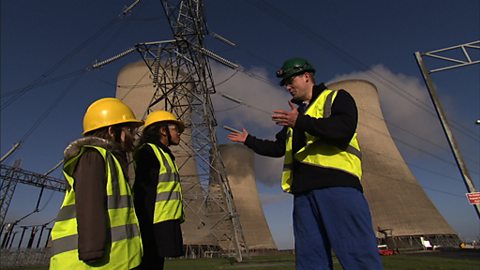
What happens to our sewage? video
Two children meet Curious Cat, an animated cat who asks them if they would like to find out what happens to our sewage once it leaves our homes.
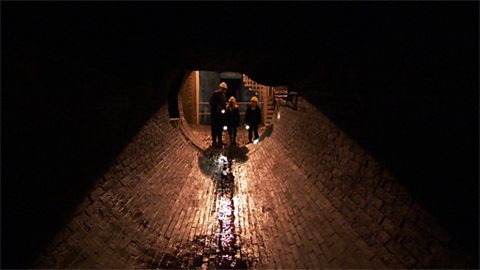
How is paper made? video
Two children meet animated character Curious Cat, who asks them if they would like to find out how paper is made.

How is glass made? video
With the help of Curious Cat, two children find out how flat glass for windows is made.
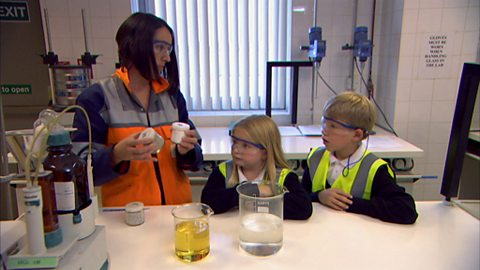
How are TV programmes made? video
Two children find out how TV programmes are made and how they reach your TV at home.
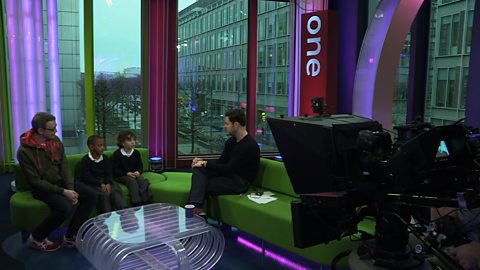
How is steel made? video
Curious Cat, an animated cat, asks two children if they’d like to find out how biscuit tins are made.
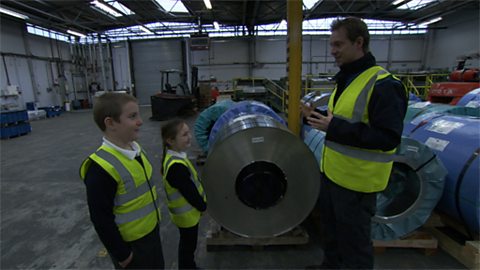
How is wool made? video
Curious Cat, an animated character, helps two children find out more about how wool is made.
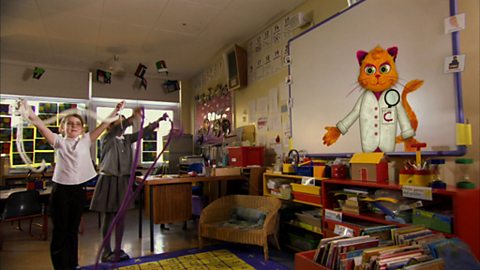
How are bricks made? video
With the help of Curious Cat, two children visit a brick factory to find out they bricks are made.
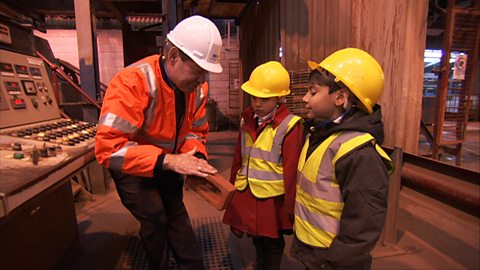
Ěý